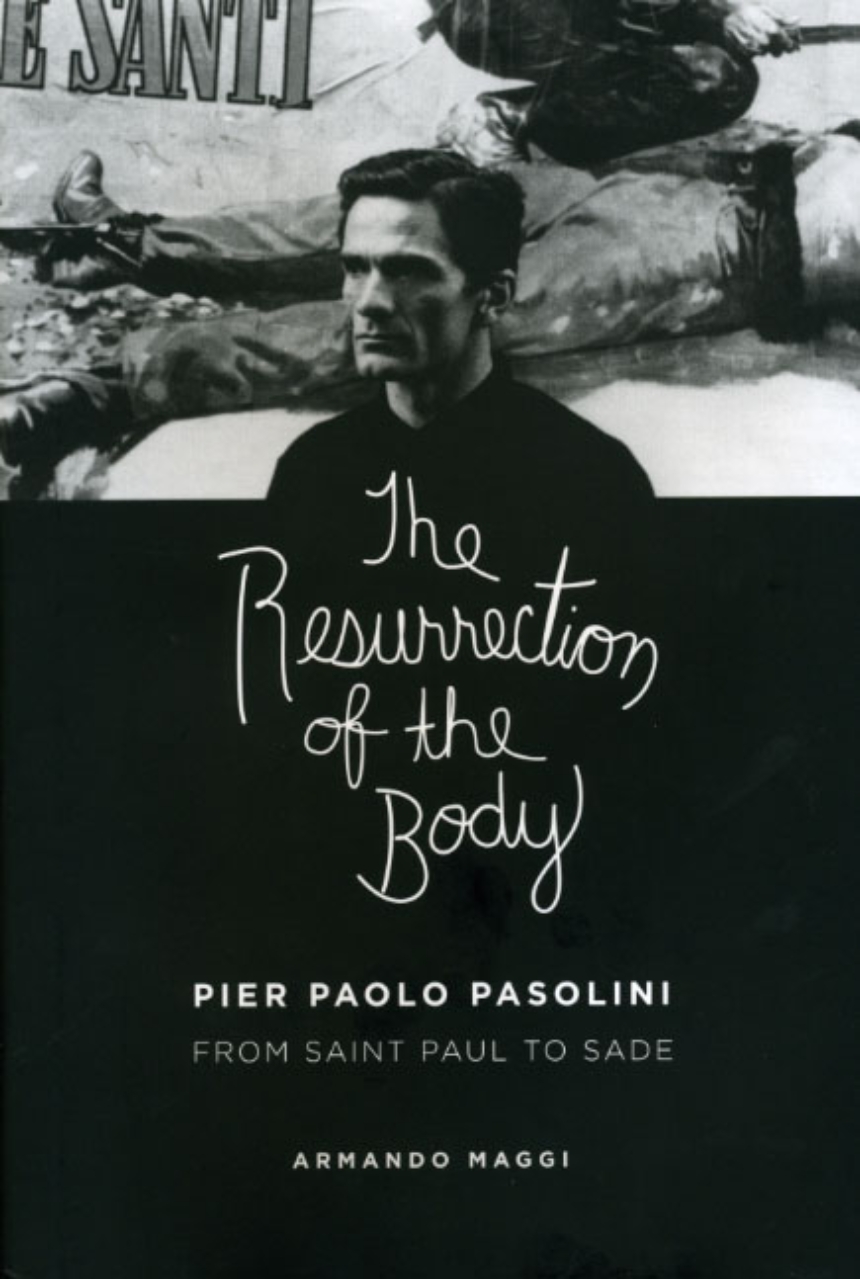The Resurrection of the Body
Pier Paolo Pasolini from Saint Paul to Sade
9780226501345
9780226501369
The Resurrection of the Body
Pier Paolo Pasolini from Saint Paul to Sade
Italian novelist, poet, and filmmaker Pier Paolo Pasolini was brutally killed in Rome in 1975, a macabre end to a career that often explored humanity’s capacity for violence and cruelty. Along with the mystery of his murderer’s identity, Pasolini left behind a controversial but acclaimed oeuvre as well as a final quartet of beguiling projects that signaled a radical change in his aesthetics and view of reality.
The Resurrection of the Body is an original and compelling interpretation of these final works: the screenplay Saint Paul, the scenario for Porn-Theo-Colossal, the immense and unfinished novel Petrolio, and his notorious final film, Salò or the 120 Days of Sodom, a disturbing adaptation of the writings of the Marquis de Sade. Together these works, Armando Maggi contends, reveal Pasolini’s obsession with sodomy and its role within his apocalyptic view of Western society. One of the first studies to explore the ramifications of Pasolini’s homosexuality, The Resurrection of the Body also breaks new ground by putting his work into fruitful conversation with an array of other thinkers such as Freud, Strindberg, Swift, Henri Michaux, and Norman O. Brown.
Reviews
Table of Contents
Acknowledgements
INTRODUCTION Sodom, Its Inhabitants, and Its Language in Pasolini’s Final Works
1. A Body of Nostalgia: Pasolini’s Self-Portrait in the Film Project Saint Paul
2. The Journey to Sodom and Gomorrah and Beyond: The Scenario Porn-Theo-Colossal
3. "A Diluted Reel of Film in My Brain": To Preach a New "Word of Abjuration" in Petrolio
4. To Give Birth in Salò and Sade’s The 120 Days of Sodom
CONCLUSION "A Schizophrenic Child Is a Tiny Dot, I Dreamed Once": Metamorphosis in Mario Mieli and Pasolini
Appendix: A Basic Biography
Notes
Bibliography
Index
INTRODUCTION Sodom, Its Inhabitants, and Its Language in Pasolini’s Final Works
1. A Body of Nostalgia: Pasolini’s Self-Portrait in the Film Project Saint Paul
2. The Journey to Sodom and Gomorrah and Beyond: The Scenario Porn-Theo-Colossal
3. "A Diluted Reel of Film in My Brain": To Preach a New "Word of Abjuration" in Petrolio
4. To Give Birth in Salò and Sade’s The 120 Days of Sodom
CONCLUSION "A Schizophrenic Child Is a Tiny Dot, I Dreamed Once": Metamorphosis in Mario Mieli and Pasolini
Appendix: A Basic Biography
Notes
Bibliography
Index
